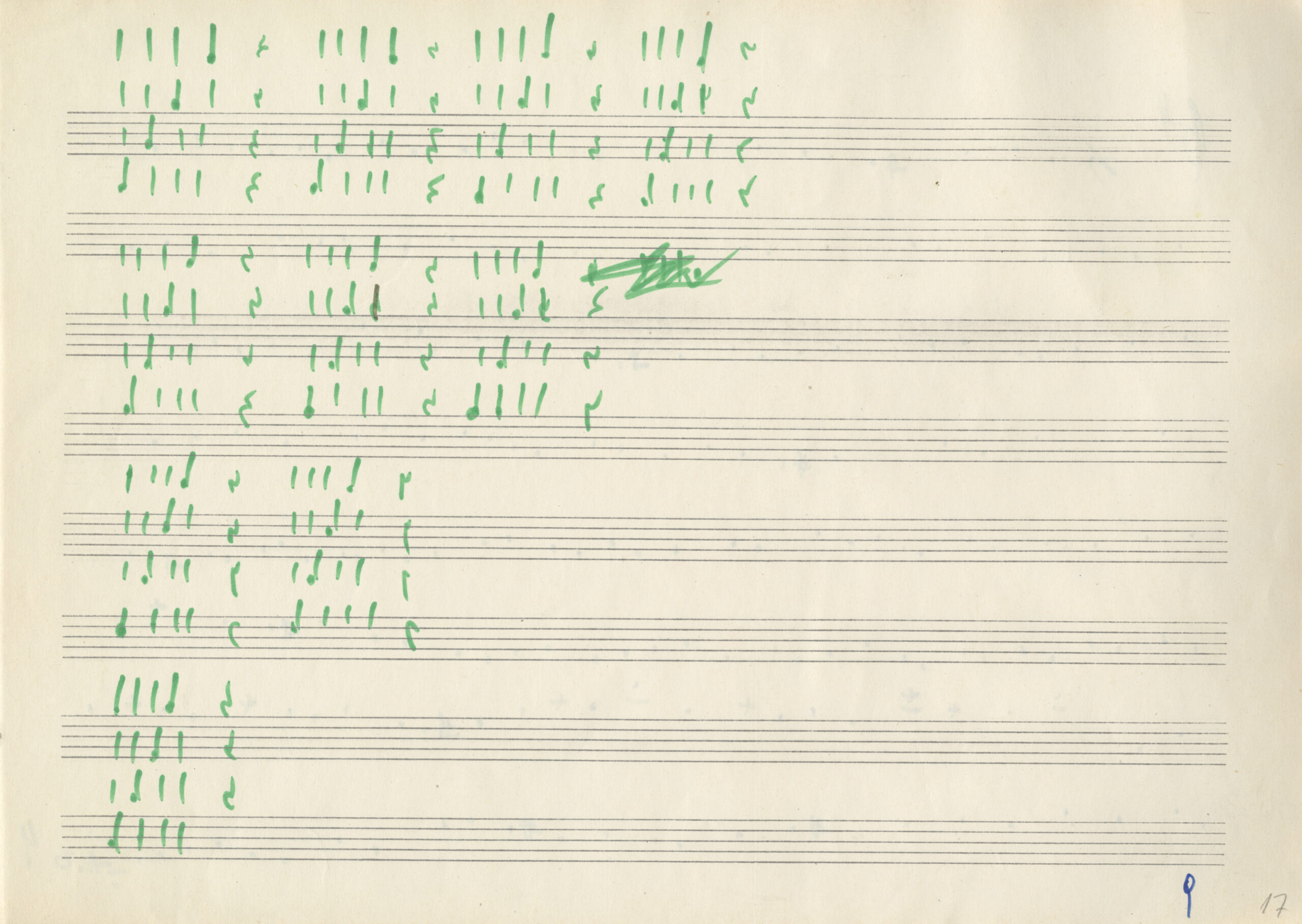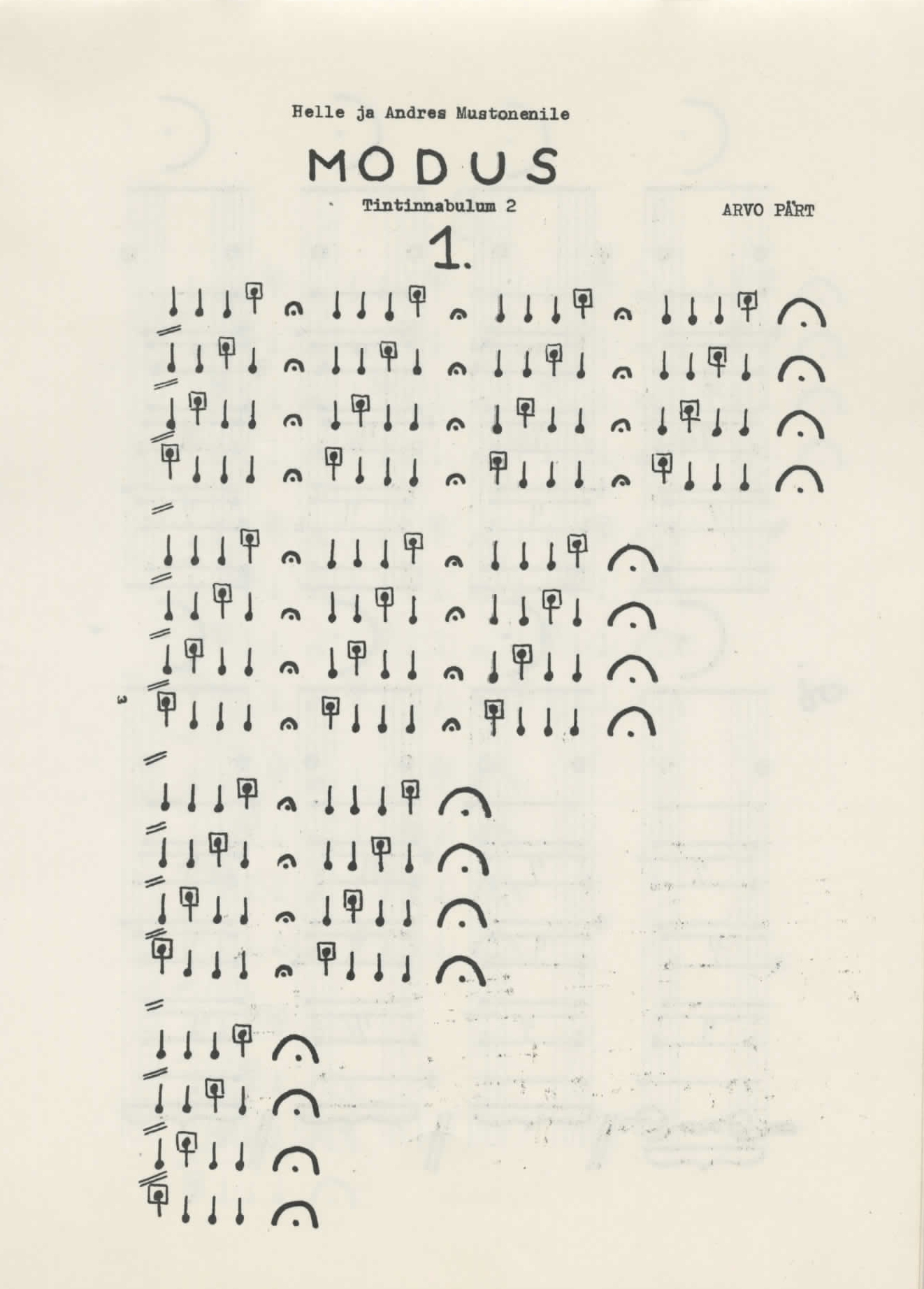Ardo Västrik, Arvo Pärt Centre
Boom-boom-boom-chah! … Boom, boom, boom, chah! … Boom-boom-boom-chah! …
Among admirers of Arvo Pärt’s music, there are probably many who have felt drawn to this somewhat enigmatic but highly dramatic work, and who will instantly recognise its musical description. Of course, this rhythmic pattern comes from the work Sarah Was Ninety Years Old, which the composer completed during the pivotal spring of 1976, the year in which his tintinnabuli style was born. In Sarah … one can clearly recognise Pärt’s handwriting, while it is not yet a work in the tintinnabuli technique, but an important link in the development of a new style. In essence, a parallel can also be drawn between the piece and Arvo Pärts life: the composer has compared his journey to a new style to crossing a barren desert, the way out of which became possible only thanks to divine intervention. It could be said that the story of Sarah is, in fact, the story of Arvo as well.
The Arvo Pärt Centre team had the opportunity to take a look at the story behind this musical composition and to discuss the existing archive materials. In this process, we could turn to the musical diaries that Arvo Pärt started keeping as early as 1974 to record his musical thoughts (later, verbal notes were also added). Already in the first notebooks, there are melodic sequences which we later find in the work in question. In early 1975, they appeared briefly in the soundtrack of the film Colourful Dreams. It was not until the end of the same year that the next elements of the work were written down in the notebooks and intensively worked on.
Arvo Pärt reminisces: “The first notebooks … I didn’t have any understanding of how to go from one note to another. I didn’t believe in what I was capable of. /- – – -/ My condition as a composer was barren, and I searched, as Sarah searched, as Abraham searched.” Nora Pärt adds: “There was a terribly strong desire in the air to compose music, but there were only one or two or three images as a material … Probably not even three. Because he was generally in a more or less paralysed state, he was not free to start making music, to write a piece, he had to take them as a starting point, to use them.”
On these same pages of musical diaries in February 1976, the composer comes to define his tintinnabuli technique in musical notation and completes a piano miniature Für Alina. A little while later, also from the month of February, the first verbal reference to Sarah is found in the notebooks. However, it is likely that this parable from the Bible may have already been in the composer’s mind. The work is based on the story of Sarah, Abraham’s barren wife from the Book of Genesis, who gives birth to a son in her old age, fulfilling God’s prophecy and promise to Abraham.
The first partly secret performance of Sarah … took place in April 1976 in Riga with the participation of the Hortus Musicus ensemble, but unfortunately few written records have been found so far. It was only on September 14, 1976 that the members of the Composers Union listened to the recording of this musical piece, i.e. it reached its official status. Shortly before that date, the word modus (lat ‘way, method’) appears in the musical diaries and its various meanings are written down.
Pärt recalls: “We didn’t dare to name it Sarah. Modus was the most formal title that could be invented for such a strict structure.”
Of course, it was unthinkable to reveal the real message of the work during the Soviet times, which is why the modest title Modus was adopted. The official premiere took place at a famous concert on October 27, 1976 in the Estonia Concert Hall in Tallinn, where the ensemble Hortus Musicus performed the seven-movement cycle Tintinnabuli. Modus was performed by soprano, harpsichord, percussion instruments, electric and bass guitar. The following year, the work was published under the name Modus, with a specification that it must be performed by soprano, percussion (tom-tom and tambourine), harpsichord, double bass (or bass guitar), violin (or electric guitar) and piano (or tam-tam).
Hidden from the wider public is the fact that between the original Modus and the final version of Sarah Was Ninety Years Old was a version commissioned by the ensemble Continuum, which featured two pianos and a soprano. The work, titled Sarah Was Ninety-One Years Old, was premiered on March 10, 1984 at Lincoln Center in New York by soprano Victoria Villamil and pianists Cheryl Seltzer and Joel Sachs. The version has now been withdrawn by the composer, but the story behind this work offers a very interesting insight into Arvo Pärt’s compositional thinking. The music of the piece as we know it today would not be the same if there was no intermediate version.
The final version, titled Sarah Was Ninety Years Old, with a more concentrated dramaturgy compared to previous versions and specified line-up was premiered on June 17, 1989 in the monastery church of Saint Georges de Boscherville near Rouen, France. It was performed by singers from the Hilliard Ensemble: soprano Sarah Leonard, tenors Rogers Covey-Crump and Mark Padmore, percussionists Glyn Matthews and Martin Allen, and organist Christopher Bowers-Broadbent. (The world premiere of another very important Pärt’s work, “Miserere”, also took place at the same concert.) It was a time when Arvo Pärt had strong ties with Paul Hillier and his ensemble, and they certainly played a part in bringing about this particular line-up. The work has been performed many times, but curiously the only commercial recording to date is on ECM album Miserere, released in 1991.
You can read more about the work and listen to it on the Centre’s website.

